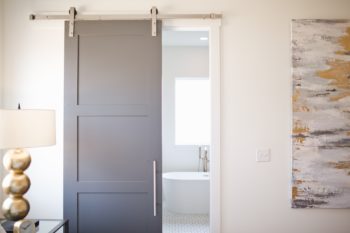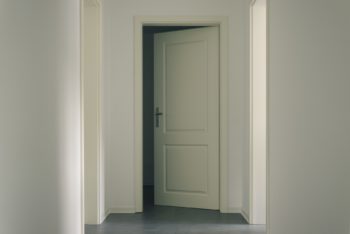A Door Posted by eriko1 on Nov 18, 2021 in Culture
A door (ドア doa). It can open or close, and it can show things and it can hide things. It does so many things and it affects so many things in our lives. I wrote about the refrigerator in my first blog. It is hard for a Japanese student who stays at a US host family to open the door of the fridge even if s/he was told to “help yourself.”
Another cultural difference concerning a door is a *bathroom (トイレ toire). In the US, you keep the bathroom door open at home when nobody is using it. Meanwhile, in Japan, you always keep the bathroom door closed. So a bit of miscommunication for both a Japanese student and his/her host family at home. The student closed a bathroom door when s/he left. Then a family member thought that someone was using the bathroom.
Talking about the bathroom door, have you been to a Japanese bathroom at a department store (デパートdepa-to), office, or stationn (駅 eki)? First of all (第一に daiichini), they are extremely clean even at a train station with the Washlet. (a brand name) You must have noticed that the door covers top to bottom while there is considerable space in the bottom of the door in the US. This makes the Japanese so uncomfortable (落ち着かない ochitsukanai) as a toilet is an absolutely private space for the Japanese. The door covers its entirety, and with the high-tech “washlet” features, comes with a flushing (ざっと流れるzatto nagareru) water sound so that nobody outside can hear any sounds. This feature is known as Otohime (a brand name). It was created to prevent water from being wasted as many women flushed water to prevent others from hearing any noise you were making.
When I went back to Japan and used one of those super clean and high-tech toilets at a department store, I felt uncomfortable with the door that closed top to bottom. I felt scared a bit. I felt claustrophobic (閉所恐怖症 heishokyoufusho). With a quick Google search, I saw one of the reasons that the bottom part of the toilet door is open is for safety in the US. I can see that after my own experience. Another reason is that you can see if someone is in the stall.
Another cultural difference concerning a door is a bathroom (トイレtoire). In the US, you keep the bathroom door open at home when nobody is using it. Meanwhile, in Japan, you always keep the bathroom door closed. So a bit of miscommunication for both a Japanese student and his/her host family at home. The student closes a bathroom door when s/he left. Then a family member thinks that someone is using the bathroom.
Another door function (役目 yakume) is to keep anything outside from getting inside. With many dangerous elements outside, this may not be the norm in Japan anymore. When I was a child, children in Japan were typically threatened to be thrown outside the house as a punishment (罰 batsu) – being driven away from the family. My mom threw me out barefoot once. My family panicked when they noticed that I was gone from the garden. I went to one of the neighbors and was watching TV. Of course, you cannot do this type of punishment anymore as kidnapping (誘拐 yuukai) is not so uncommon. Meanwhile, in the US, a child is grounded (外出禁止にされるgaishutsu kinshi ni sareru) and ordered to stay in his/her room as a punishment – a removal from social (社会的 shakaiteki) interaction.
A punishment in Japan is removal from one’s family, while it is removable from one’s society in the US.
A simple panel of wood can tell you a lot about cultural differences.
*Traditionally, a toilet and a bath are in separated rooms in Japan. However, some new small apartments have them both in the same room.

Build vocabulary, practice pronunciation, and more with Transparent Language Online. Available anytime, anywhere, on any device.






Comments:
Lynn:
That was very interesting, thank you!
eriko1:
@Lynn Thank you!